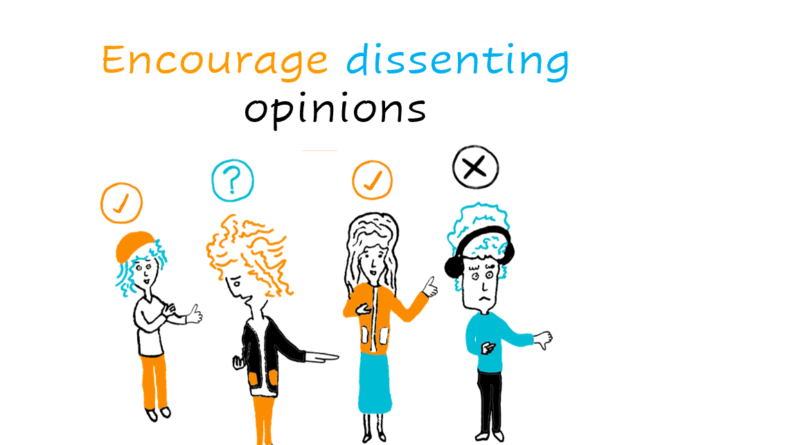How To Foster Effective Group Decision Making
This blog is also published at PMI’s Project Management blog.
Individual decision making is fraught with biases and fallacies. In one of my earlier blogs I talked about common fallacies and biases in program management. We can mitigate these biases by using group decision-making techniques, where you encourage participants in a group to brainstorm a solution/decision. Group decision making taps into the collective intelligence of the group and increases the acceptance of the decision by all the group members.
Drawbacks
However, group decision making has its own drawbacks. A couple of key drawbacks are:
- Groupthink – A psychological phenomenon that occurs within a group of people in which the desire for harmony or conformity in the group results in an irrational or dysfunctional decision-making outcome.
- Possible domination by the most vocal or senior person.
We can avoid these drawbacks by using some facilitating techniques that bring out dissenting opinions and give everyone in the group a chance to present their thoughts/ideas.
Facilitating Techniques
Here are three facilitating techniques that we can use to bring out dissenting opinions:
- Devil’s advocate method – As the name indicates, in this technique we identify one person or a subgroup to act as “devil’s advocate.” One subgroup iden=tifies the solution or decision and corresponding assumptions. This subgroup then presents the decision to the “devil’s advocate” subgroup/person. Responsibility of the devil’s advocate subgroup/person is to present a contrarian view and poke holes into the assumptions and the decision/solution. Intent of this facilitating technique is to think through alternate scenarios.
- Dialectical inquiry method – This is very similar to the devil’s advocate method. The main difference is that in this method, one subgroup is assigned to think through one option and the other subgroup is assigned to think through the opposite option. Both the subgroups then come back and talk about both the options. The team then comes to a final option based on the group discussion. One key thing to remember when using this technique is to ensure there is diversity in terms of gender, experience, personality types etc. when creating the two subgroups.
- Step-ladder method – In this technique…
- In the first round we ask everyone in the group to come up with their own ideas.
- In the second round we bring in two people, have them present each others’ ideas and agree on a temporary decision/solution.
- In the third step, the third person presents his/her idea to the first two and the three of them come to a temporary decision/solution.
- This continues until everyone has a chance to present their ideas in an unbiased way and their feedback is incorporated into the final decision. This is a time-consuming process, so use this cautiously.
Convergence Techniques
In situations where we end up with more than one decision/solution, we can use objective criteria to converge into a single solution/decision. Here are a couple of frameworks we can use to make rational decisions:
- Mediating assessment protocol: Daniel Kahneman, a Nobel Prize-winning psychologist, suggested this approach for making important strategic decisions. In this method, we identify assessments or criteria that are important for analyzing a decision. We then assign individuals to conduct the assessments. Once all the assessments are done independently, the group then makes a collective decision based on individual assessments. Interviews conducted by major tech companies like Google, Amazon and Facebook follow this protocol, wherein there are multiple interview loops like system design, coding and behavioral assessments that are conducted by individual interviewers. A group decision is made on the interview candidate based on these individual assessments.
- Relative weighting: In this method, we identify a set of criteria that are important in making the decision and assign relative weight for each of those criteria. We evaluate the decisions based on the relative weights of the criteria and pick the one that has the maximum weight. As an example, when we must finalize a list of features to implement, we can assign complexity, feasibility and impact as the criteria—and each of these have relative weights. We then evaluate the features against these criteria.
What are some of the ways in which you have debiased group decisions? Let me know in the comments.
